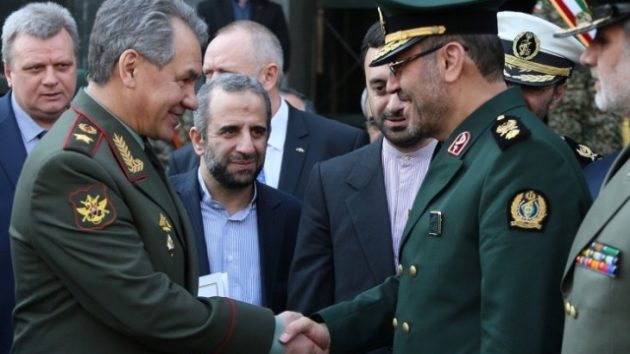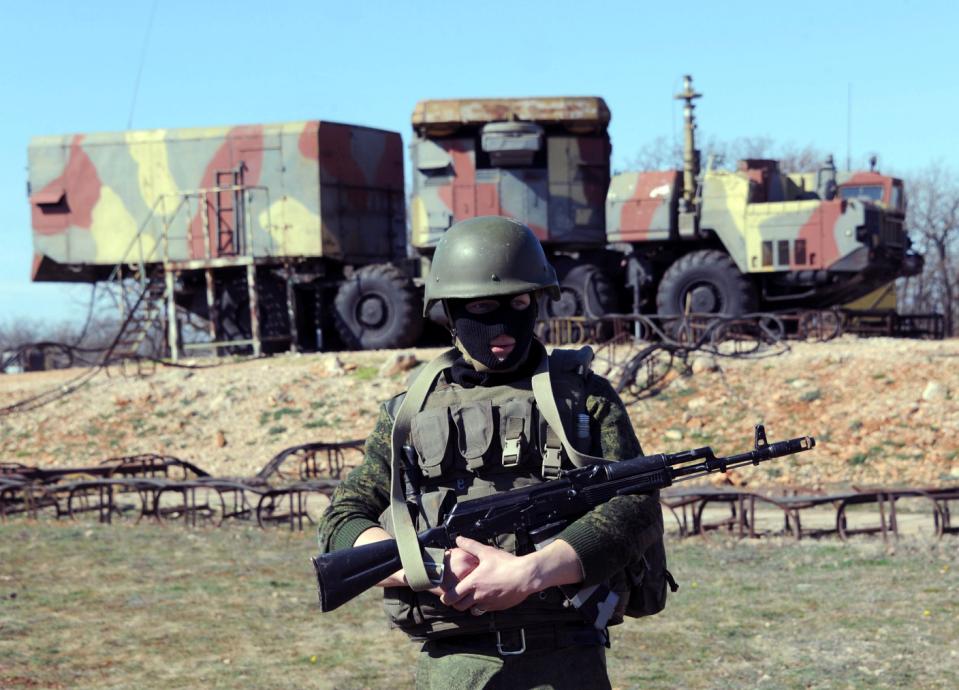Has Russia Joined the Axis of Evil?
On January 20, 2015, Russian Defense Minister Sergei Shoigu signed an “cooperation” agreement with Iranian Defense Minister Hossein Dehghan in Tehran. Both countries are the targets of Western and US Sanctions. Both countries are afflicted with erosion of oil and energy revenues. Both countries are seeking to blunt opposing US interests in Eastern Europe and the Middle East. That is reflected in a comment of Iranian State television by Dehghan reported by AFP, that Iran and Russia had a “shared analysis of US global strategy, its interference in regional and international affairs and the need to cooperate in the struggle against the interference of foreign forces in the region.” There is also the matter of weapon systems deals with proceeds which might bolster Russia’s depleting foreign currency reserves, while combating America’s ally in the Middle East, Israel .
Moscow Times reported:
Russia’s TASS news agency quoted Shoigu as saying the agreement hashed out a “theoretical framework of cooperation in the military sphere,” and also features an increase in naval cooperation, particularly visits by Russian and Iranian naval forces to each other’s ports.
Although Shoigu made no mention of a breakthrough in arms negotiations with the two countries — which have both come under Western sanctions — Iran’s Fars said that Moscow and Tehran would resolve problems with the delivery of the advanced missile system.
Russian state news agency RIA Novosti confirmed the issue was under discussion.
“A step was taken in the direction of cooperation on the economy and arms technology, at least for such defensive systems such as the S-300 and S-400. Probably we will deliver them,” RIA Novosti quoted Colonel General Leonid Ivashov as saying.
Ivashov is the former head of the defense minister’s department of international cooperation.
TAAS reported the U.S. studying the announced Russian –Iranian military agreement, but specifically objecting to possible shipment of the S-300/400 air defense system. Russia might finally ship Iran the advanced S-300 air defense system that both the U.S. and Israeli successfully lobbied former Russian President Medvedev in 2010 to cancel. Immediate payment by Iran of $800 million for the S-300 system may have cemented the deal. This defense cooperation deal is a prelude to a meeting between Russian President Vladimir Putin and Iranian President Hassan Rouhani in a Central Asian republic location.
The Russian delivery of the S-300/400 air defense system to Iran maybe a possible counter to the IAF December 8, 2014 attacks at Damascus International airport hangars that destroyed deliveries of missiles headed for Hezbollah in Lebanon and allegedly killed two senior terrorist proxy operatives. Note this unusual exchange between a Russian Foreign Ministry official and Israeli Intelligence Minister Yuval Steinitz reported by Ha’aretz:
“Moscow is deeply worried by this dangerous development, the circumstances of which demand an explanation,” Russian foreign ministry spokesman Alexander Lukashevich said.
In a letter to the United Nations, Russia complained about Israel’s “aggressive action” and demanded that such attacks should not happen again, the spokesman said.
Syria also complained to the UN about the strikes, demanding that the Security Council “severely condemn the Israeli attack and impose punitive sanctions on Israel due to its support of Syrian terrorist organizations.”
Israel has neither confirmed nor denied the reported strikes. “We have a firm policy of preventing all possible transfers of sophisticated weapons to terrorist organizations,” Intelligence Minister Yuval Steinitz told Israel Radio.
Israel may be prepared to counter an Iranian S-300 threat. We commented in a 2010, Iconoclast Post:
In June 2008, Israel’s air force undertook massive air training exercises involving more than 100 aircraft in the eastern Mediterranean against Greek S-300 Russian air defense systems. That effort demonstrated the canny effectiveness of swarming attacks against the S-300 and later versions that upset the Iranian military and Revolutionary Guards.
This geo-political deal between two regional hegemons comes on the heels of an Israeli helicopter missile attack on a convoy in Quneitra, Syria last weekend that saw the deaths of senior Hezbollah and Iranian Revolutionary Guards Corps commanders. The Guardian reported the deaths of Jihad Mughniyah, son of the late Hezbollah terrorist mastermind, and IRGC General Mohammed Allahdadi confirmed by both Hezbollah’s Nasrallah and Ayatollah Khamenei. IDF Maj. Gen. (ret.) Yaakov Amidror, former Israel National Security Adviser, now senior fellow Begin-Sadat Center commented:
The fact that a senior Iranian is involved, who was involved in planning actions against Israel, is on the benefit side. The presence of a senior Iranian must also come up on the price side. And if his presence was known to the decision-makers, this should have been on the table as part of the problem.
Both Sheikh Nasrallah leader of Hezbollah and Supreme ruler Ayatollah Khamenei pledged “crushing revenge” for the deaths of these senior commanders in the Axis of Resistance that unites Assad’s Syria, Iran and its Lebanese Shiite proxy, Hezbollah. Speculation centers that the Hezbollah and IRGC commanders were engaged in possible ‘imminent’ attacks on Israel’s Golan; Nasrallah had threatened in a recent speech on the Galilee using “sophisticated missiles”. The Golan has seen activities by Hezbollah and Assad regime forces fighting Sunni opposition militias, Al Qaeda affiliate Al-Nusrah Front and possibly Islamic State units. The IDF has deployed an Iron Dome battery to the Golan, reinforced units and conducted artillery drills.
According to some Lebanese analysts, if Hezbollah was foolhardy enough to undertake revenge for Israel’s Sunday’s attack, it might target the Shebaa Farms, an area disputed between Lebanon and Israel. However, Israel analysts contend that Hezbollah is in no position to conduct a repetition of the 2006 Second Lebanon War, despite its sophisticated fortifications and tunneling capabilities.
Al Arabiya cited Lebanese analysts suggesting that the Israeli attack represented “a colossal failure” for Hezbollah:
“This was a colossal failure … because they [Hezbollah] put this number of senior figures in one spot and at the same observation point and at the same time,” Wehbe Katicha, a former Lebanese army general, told Al Arabiya News.
They pointed to the admission by Nasrallah last Thursday that Israeli intelligence had penetrated Hezbollah leadership causing a major security breach:
A member of Hezbollah chief Hassan Nasrallah’s inner circle was recently reported to be spying for Israel. Local media identified the man as Mohammad Shorba. This is one of the most pressing and prominent breaches in the group since its formation.
Katicha noted Shorba’s case, saying the Shiite group was always vulnerable to such infiltration.
[…]
“Shorba was arrested by Hezbollah. He was a senior figure,” he said.
Whether the Russian Iranian military cooperation accord is simply the latest episode in the geo-political games impacting US international interests, or is tacit admission of Russia to the Axis of Resistance, Israel is taking no changes. It is strengthening its northern frontier should Hezbollah with Iranian backing unleash a doubtful “crushing action” against the Jewish nation. Given the latter’s success in Sunday’s attack in Syria and Intelligence breach of Hezbollah security, that prospect is doubtful.
EDITORS NOTE: This column originally appeared in the New English Review. Images provided by NER. The original title of this column was “Has Russia Joined the Axis of Resistance”, we have replaced the word resistance with evil. President George W. Bush stated that the Axis of Evil was Iraq, Iran and North Korea. That assessment has not changed.




Trackbacks & Pingbacks
[…] Фото: drrichswier.com […]
Comments are closed.